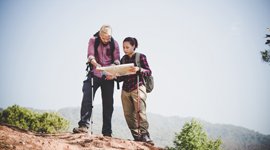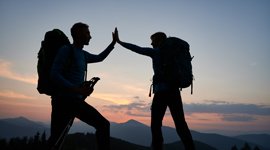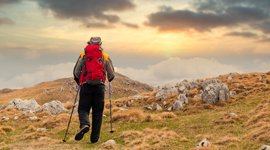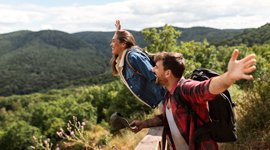Hiking and trekking share similarities, but they have key differences:
Similarities:
Differences:
There isn’t any one golden rule for trekking. But, here are a few golden rules that trekkers go by:
The following are the best exercises for trekking:
You can turn back from any point you like, no one will force you to continue. We ensure there are enough team members in the team if a situation like this arises. Some members will descend with you and you will be safely dropped at the Base village. Note here that any money will not be refunded and you will pay for your accommodation from the base village to your return destination.
Yes. You can trek if you are on your menstrual cycle, but you should take extra precautions for a safe and fulfilling trek experience. Here are some points to keep in mind:
We have female trek leaders working for us and we understand your desire to be led by one, but it’s not possible for us to disclose the treks assigned to different trek leaders. Rest assured, no matter the trek leader (a male or a female), they will both maintain the utmost safety for you.
Send us (Trekking Compass) a detailed account of the foods you are allergic to and we will adjust things accordingly. You should inform us before the trip begins, at least 25 days before the trip’s start date.
High-altitude treks are challenging, even for adults, therefore a child needs to be both mentally and physically prepared for the trek. These are some definitive ways to do it:
You should wait a while, if not, you can contact us at trekkingcompass@gmail.com. We will ensure that all your queries are resolved.
Booking a trek with Trekking Compass is summed up in the below steps:
You can register an account with Trekking Compass by clicking the ‘Create Account’ icon on the homepage. All you need to register an account with Trekking Compass is:
The other way is to register while booking a trek.
A trekker needs to be fit and in good health. Regular stretching, working out and breathing exercises 2-3 weeks before the beginning of your trek can prove a great deal.
Trek dates and routes reflected on the calendar of Trekking Compass are fixed. A customized itinerary and dates can also be planned out for a group of people.
Absolutely. Trekkers should carry medicines for specific medical conditions. Trekking Compass group leaders have a general medical kit containing basic first aid tools and medicines for general sickness and conditions.
The available drinking water is from the freshwater streams. It is clean to drink but you can ask your Trekking Guide and our support team for safe drinking water (Boiled at 100 degrees).
Trekking Compass serves trekkers and travelers with locally grown stock of grains and vegetables of Uttarakhand.
Good quality breathable, water resistant, high-ankle hiking shoes are a must as a trekker will have to walk through the mountain trails in snow and rain.
We have mules and porters for carrying camping equipment and food stock. Ideally, trekkers need to carry their rucksack hence it is advised to choose the right size of your backpack and to carry only the essentials. If a trekker fails to carry his/her l.uggage, a porter/mule can be arranged in exchange for suitable payment. This payment is exclusive of the trek payment that you paid us (Trekking Compass)
A complete list of all necessary things to carry is mentioned in the book and on the Trek page of the Trekking Compass website. Before the beginning of the trek, we will inform you by mail as well about all that the trekkers are required to carry with them.
We welcome women trekkers to trek with Trekking Compass. Ensuring safety for our women trekkers is highly important to us and we are striving to do the best we can.
Usually, our trekking group size is a maximum of 15 people in one group, while for school students, a maximum of 50 people in one group.
Trekking Compass tour guides are experienced mountaineers who come from high mountain regions and know the trek route very well. If any adverse situation due to climate change arises, our team leader will bring back the entire team safely to the base camp or safer campsites.
Till 3000 meters there shouldn’t be any problem for a person. It’s still advisable to consult your doctor beforehand.
Every day trekkers walk for a minimum of 5 km to a maximum of 15 km. The duration of each trek route depends on variations in altitude (low to high) and the nature of the mountain.
A trek’s expertise level depends on the altitudinal variation, topography of the destination, effect of climatic attributions, and atmospheric oxygen level. Generally, trek levels are of 3 basic category.
For Trekkers who enjoy trekking in winter, the months of October to March are a great time to enjoy snow-capped peaks and trek routes. The summertime trekkers are welcome from April to June. Lovers of wild flora and fauna and lush green nature will surely enjoy monsoon trekking in August and September.
Age is not a barrier for trekkers in good health. Moreover, we at Trekking Compass encourage senior trekkers to trek with us. We have special treks designed for seniors keeping the trek levels from easy to moderate. Please consult our website for details of such short treks.



